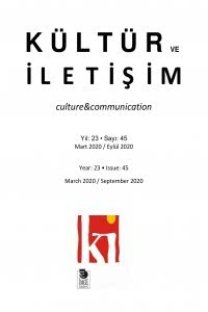Etnografik Sinema, Antropoloji ve Kültürün Görsel Olarak Belgelenmesindeki Temsil Sorunları
Sinemanın ilk günlerinden itibaren etnografik film, kültürün belgelenmesi için önemli imkânlar sunmuş olsa da antropoloji bilimi için bir çeşit tehdit olarak algılanmıştır. Kültürün görsel temsilinde kamera antropolojik göze teknolojik bir alternatif oluşturmuş, dolayısıyla antropolojinin filmle ilişkisi bu sorunsal üzerine inşa olmuştur. Makale, antropoloji ve film ilişkisinin epistemolojik arka planını tartışmakta ve hem antropolojinin hem de etnografik sinemanın temsil yetkisi ile ilgili ortak sorunsalları ve çözümlerini üç etnografik film üzerinden örneklendirmektedir. Bunlar Trinh T. Min-ha’nın Reassamblage, David ve Judith MacDougall’ın The Wedding Camels ve Jean Rouch’un Jaguar filmleridir.
Anahtar Kelimeler:
Antropoloji, etnografik sinema, temsil, belgesel film.
Ethnographic Cinema, Anthropology and Issues of Representational Authority in Visual Documentation of Culture
Ethnographic film has offered unique tools for cultural documentation since the emergence of motion pictures. However, visual representations of culture have had a problematic relationship with the larger discipline of anthropology for decades in part due to the threat of the camera to replace the scientific yet imperfect eye of the anthropologist with a technological tool. This article argues that the rocky relationship between anthropology and the moving image has deeper roots in the epistemological constructions of Self and Other, Home and Field, as well as Modern and Primitive. In conjunction with the dissolution of anthropological authority, a number of ethnographic films dealt with theoretical and ethical questions in relation to the issues of representational authority. The article illustrates three different ethnographic and filmic approaches to the issue: Reassemblage by Trinh T. Min-ha, The Wedding Camels by Judith and David MacDougal and Jaguar by Jean Rouch.
Keywords:
Anthropology, ethnographic cinema, representation, documentary film.,
- ISSN: 1301-7241
- Yayın Aralığı: Yılda 2 Sayı
- Başlangıç: 1998
- Yayıncı: İmge Kitabevi Yayınları
Sayıdaki Diğer Makaleler
Nietzsche’nin Natüralizmi Karşısında Hegel’in Diyalektiği
Yadigâr: Bir Hafıza Mekânı Olarak Mutfak
“Kalkınan” Taşra: Gaziantep Yerel Basınında Kalkınma Söylemi
Hareket ve Anlatı: Film Zamanı İçin Çift Yönlü bir Analiz Denemesi
Gösterileşen Şehir, Çağıran Yaşam Tarzları ve Gizlenen Sınıfsal Farklılık
Stuart Hall’un Düşüncesinde Belirlenim ve Marksizm
İnançta ve Toplumsal Yaşamda Alevilikte Kadın Konferansı
Etnografik Sinema, Antropoloji ve Kültürün Görsel Olarak Belgelenmesindeki Temsil Sorunları
